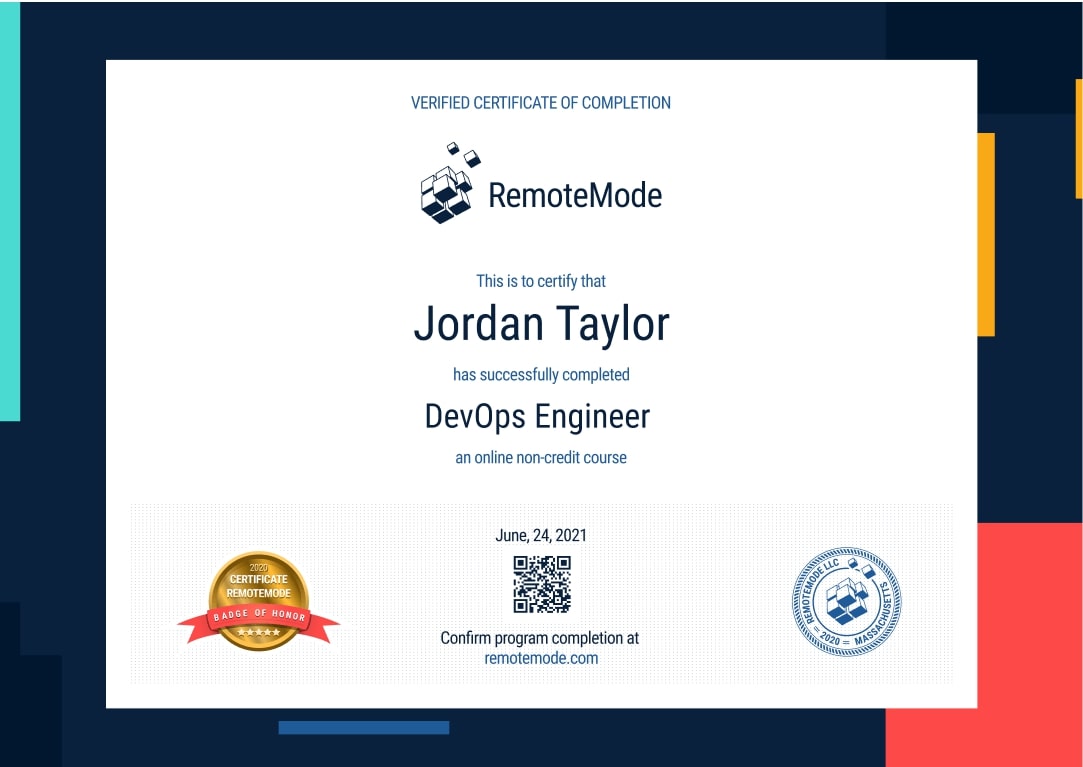Become a Front End Developer
Use state-of-the-art programming languages to develop tools that users interact with to navigate applications, web pages, and more. Get quality training that will bring you up to speed with this ever-growing, fast-changing industry.
- 8-month long course
- 254 lessons
- 5 hours a week
- 167 hours



Mission Forecast for Front End Developers
Landing Zone
Front End Developers are critical coders that not only make applications useable but are responsible for creating interfaces that users can easily and effectively navigate. Front End Developers are well versed in not only the ability to make such pages but have a keen eye for design and useability. Front End Developers are expected to see a 13% increase in jobs in the next 10 years.
Mission Objective (Who’s Hiring Right Now)
Front End Developer Overview
When learning front-end development, you’ll learn specific languages and industry-standard tools such as HTML, CSS, and Javascript. You’ll learn how to create a functional and engaging interface, code different functions for web pages, and use cutting-edge tools such as JQuery, Angular, and React.
- + 8-month long course
- + 5 hours a week, go at your own pace
- + 254 on-demand lessons
- + 167 hours of learning materials
- + Receive a certification confirming your training
- + Participate in real-life Virtual Lab projects
- Integrate video, audio, and other tools into web pages.
- Incorporate forms and different widgets and collect given user data.
- Troubleshoot, test, and launch webpages you’ve created.
- Troubleshoot errors and squash bugs.
Prepare for Liftoff
Learning Angular
Angular is a commonly used platform for developing scalable web applications. It is considered an established software as it houses optimum features that make programming easy and seamless. These functions, which will be discussed throughout this lecture, allow for the development, testing, and updating of codes.
While Angular has a comprehensive interface, it still calls for an authoritative tutorial. This course intends to bring a meticulous discussion of the platform with respect to its definition, function, and application. More so, this lecture aims to see the development process through by discussing the following:
- Development Fundamentals of Angular 12
- Architecture of an Ideal Application
- JavaScript Framework Principles and Practices
Introduction to Angular
Prior to the actual development process, it is necessary to familiarize and be adept with the Angular platform. This section provides the basics of the system including an overview of its directives, data posting, routing, and pipes. This, too, discusses different versions of the platform so that course takers will understand which is the most ideal and workable version.
Angular Directives
Discussed in this section are the types of directives that bear lasting significance to the overall development process. Components, attributes, and structural directives are put into study, focusing on their usage and method of implementation. More so, the processes of removing, organizing, and updating properties using different models are presented.
Posting Data
This section provides precise instructions on how to post, update, and delete data using HTTP Client. Included in the manual are lessons about the necessary frameworks, commands, and APIs that work with Angular. In addition to this, the complex work of HTTP request is made more understandable by broadly explaining the process of documenting and gathering of data.
Routing and Pipes
This separate discussion then offers lecture about pipes’ usage. With this, course takers will be able to understand how to use routes and pipes to connect and transform strings, currency, and other data for display. This, too, provides a list of pipes for specific types of API in a bid to bring adequate knowledge for pipe internationalization.
Forms
In this section, two approaches are discussed to make data-entry tasks in applications possible. Reactive and template-driven approaches were studied, putting focus on their relevance and function. By doing so, an intensive lecture on how to track changes, validate input, and create forms will be made known. It also provides conditions that will determine what approach to use and when to use them best. Lastly, it delves deeper into discussion about the forms’ differences, scalability, foundation, and mutability.
Reservation Applications
The complete guide on how to develop logistics, booking, appointment, and reservation-ready applications are discussed in this lecture. Several working structures are provided including hotel accommodation, airport bookings, restaurants, and doctor appointments. These are then discussed with great precision, and are presented depending on their interactivity. Course takers need only to select their preferred structure and a complete guide will be made available.
Check-in and User Interface
For this lecture’s final segment, course takers will be given a thorough lecture on how to build a visually appealing user interface. This then discusses various design principles that come favorable and suitable for different types of ventures- be it corporate, commercial, or for non-profit organization. More so, installation of search engines, configurations of Backend, and creation of automatic suggestions are presented.

Mission Control
- Stay focused with a mentor’s help and support
- Build a real portfolio with Virtual Lab Projects
- Compete with classmates in a virtual classroom
- Measure your progress with the Activity Tracking Log
- Make sure you get the job with resume help and interview assistance
In Collaboration with
Chart Your Trajectory (254 videos 81 hours)
Certificate of Completion
- Receive a certificate recognized by prevalent companies confirming your training
- Complete real projects in Virtual Labs
- Go at your own pace, learn your way
- Access course videos and materials 24 hours a day
- Take practical quizzes to keep you up to speed
- Classes created and mentored by industry leaders

Grow into a Front End Developer
Once you’re certified, jump into the industry and push it to new levels. Learn how to properly create usable interfaces, work with backend teams, and use your creativity to make something worth sharing.
Program Forecast
- 8 months long, 5 hours per week
- 254 lessons in 167 hours
- Learn at your own pace
Virtual Lab
- Real Projects
- Create a working portfolio
- Receive expert feedback and mentoring
Career Services
- Interview preparation
- Resumé assistance
- Help with LinkedIn networking
Request More Information
View pricing and financing options